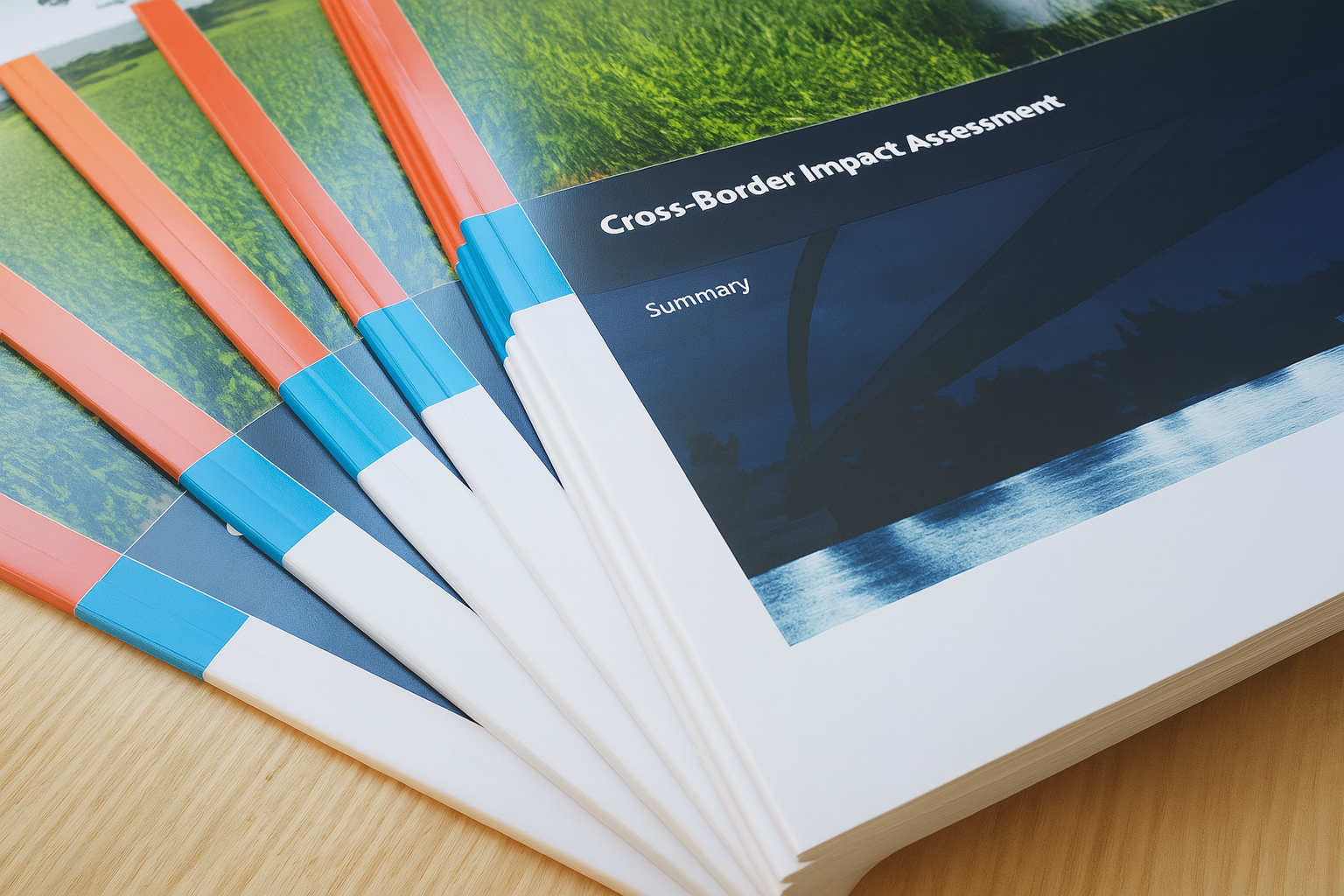The topics for the ITEM Cross-Border Impact Assessment 2025 have been selected. The final reports will be published in November 2025.
ITEM’s main task is to help remove border barriers within the EU. We therefore publish a detailed annual report on what we consider to be current issues from legislation and policy that could raise such barriers. These include, for example, barriers for people who live in one country but work in another, or barriers that prevent local authorities from collaborating on cross-border projects. By identifying and analysing these topics, ITEM aims to contribute both to the scientific debate and to the improvement of (policies on) cross-border mobility and the socio-economic development of border regions in practice.
This year’s topics:
1. Ex-post assessment of the Revised Schengen Borders Code
Last Summer 2024, the revision of the Schengen Borders Code went into force. Within the proportionality test for reintroducing internal border controls, a specific cross-border impact assessment has been introduced. In this respect, Schengen countries have to assess the cross-border impact when introducing and evaluating internal border controls. During COVID-19, border regions were affected disproportionately according to Commission’s evaluations. It is also in this light, that a specific cross-border impact assessment was introduced within the Schengen framework.
Since then, several countries have reintroduced internal border controls, such as Germany, France and the Netherlands. In the public communication, generally little attention was given to the cross-border impact assessment. On the other hand, the importance of a well-functioning Schengen was highlighted by Letta and Draghi for example, as well recognised by the Polish presidency and the new Commission. Indeed, open borders and European integration have significantly contributed to socio-economic development and growth, cohesion and cooperation across borders on both European and euregional scale.
This year, ITEM’s cross-border impact assessment will focus on an ex-post assessment of the Revised Schengen Borders Code. Together with TEIN partner we will evaluate the effects of these border controls in different European border regions and compare country practices.
Currently confirmed partners and cross-border territories:
- Triborder of the Netherlands, Belgium + Germany: ITEM, Maastricht University (with PREMIUM Students)
- Kehl/Strassbourg (Germany-France): Euro-Institut
- Grande Region: UniGR-Center for Border Studies
- Borders of France: MOT
- Borders of Hungary: CESCI
2. Ex-ante assessment of a Single Digital Booking and Ticketing Regulation
Cross-border train travel is still too difficult for many citizens. People should be able to use open booking systems to purchase trans-European journeys with several providers, without losing their right to reimbursement or compensatory travel: “To this end we will propose a Single Digital Booking and Ticketing Regulation, to ensure that Europeans can buy one single ticket on one single platform and get passengers’ rights for their whole trip.” The ambition to improve the European situation regarding cross-border train travel was put strongly forward in the Political Guidelines of Commission President Ursula von der Leyen. Also Transport Commissioner Tzitzikostas highlighted this ambition: “For rail, I will present to you in the first year of my mandate a proposal for a Single Digital Booking and Ticketing Regulation. Improving existing obligations in this area. Passengers rights must evolve accordingly, offering protection for an entire journey, including those involving different operators.”
The initiative was not mentioned on the Commission Work Programme. However, as an earlier initiative Multimodal Digital Mobility Services Regulation was on the Work Programme for 2022, the Commission addresses these proposals as already initiated with no need for the Commission Work Programme. It is the expectation that the Regulation will be proposed and adopted by the Commission in 2025. Ticketing and planning is also often raised in several studies and policy documents. On all different levels, across stakeholders, it is raised as a main concern. The close interconnection between the ticketing (SDBT) and mobility service (MDMS) proposals also allows to already identify some elements for reflection and lessons learnt.
Therefore, this dossier will ex-ante assess the proposal by making use of these lessons learnt from cross-border practices, projects and studies as well as the 2022 proposal for an MDMS. The geographical scope will be concentrated to the Benelux Union and Germany.
3. 360° cross-border labour market: Challenges and solutions for recognising professional qualifications in border regions
In border regions, professionals frequently cross borders for work, as the labour market opportunities can expand significantly with a “Euregional 360-degree” perspective. This dynamic also applies to businesses and institutions in these regions, which may hire workers from neighbouring areas. Meanwhile, EU countries are grappling with skills and labour shortages, driven by demographic changes and an increasing demand for skilled workers. Before starting employment in another Member State, professionals often need to have their qualifications (education and training) officially recognised, particularly in regulated professions such as healthcare and education. In these sectors, authorities require practitioners, like doctors, to meet specific standards of training and competences.
At the EU level, this recognition process is governed by Directive 2005/36. In 2016, ITEM conducted a Cross-Border Impact Assessment, examining the cross-border effects of the Directive. Despite the existence of a common EU framework, it identified several obstacles especially experienced in border regions. For example, the recognition process can be time-consuming for cross-border workers, imposing significant administrative burdens and, in some cases, leading to the rejection of qualifications from neighbouring countries on the grounds of “substantial differences”.
A recent assessment of the Directive by the European Court of Auditors also highlighted several challenges: the Directive has not yet been fully implemented in all Member States, and measures such as electronic procedures are not fully utilised. Examples of non-compliance were also identified, such as some authorities requiring additional documents and conducting more checks than the Directive allows for. The European Commission is currently carrying out an evaluation of the Directive.
These developments underscore the need for an update to the ITEM study, nearly a decade after its initial assessment. Through an analysis of recent evaluation and implementation reports of the Directive, developments in border regions regarding the creation of (joint) services, a survey sent to citizens and institutions in border regions to gather their experiences, and statistics on mobility and recognition, the study will focus on evaluating the challenges and solutions for facilitating the recognition of qualifications in the border regions between the Benelux countries (Belgium, Luxembourg, and the Netherlands), as well as Germany and France.
4. Ex-post evaluation of the European Framework Agreement on social security with respect to cross-border teleworking
In 2021, the ITEM Cross-Border Impact Assessment focused on the impact analysis of the future of working from home for cross-border workers post-COVID-19. The report analysed the tax and social security consequences of hybrid working across national borders for cross-border workers. In the meantime, various reports, initiatives and developments have occurred. However, it is still an important theme for the cross-border labour market, which has been addressed to varying degrees.
One important development was the Framework Agreement on Social Security in 2023, which allows cross-border teleworking up to 50% (49%) without social security consequences. Several member states have signed this Framework Agreement, which means that cross-border workers and employers can make use of this arrangement. On the other hand, the fiscal reality in many cross-border cases is still different. For example, the Netherlands is still in talks with neighbouring Belgium and Germany about a fiscal threshold for working from home. A limited threshold of 34 days per year is in the offing between the Netherlands and Germany. With Belgium, the Netherlands is in discussions about a possible home working arrangement to facilitate (occasional) home working, but this has not yielded agreement yet. With Belgium, however, the issue of a permanent establishment has been clarified; Germany has clarified this unilaterally.
Two years after the conclusion of the Framework Agreement, this dossier focuses on its ex-post evaluation. To what extent have cross-border workers made use of it? What are their experiences? And how does it relate to the (different) tax regulations? The geographical focus is on the Benelux area and Germany.






